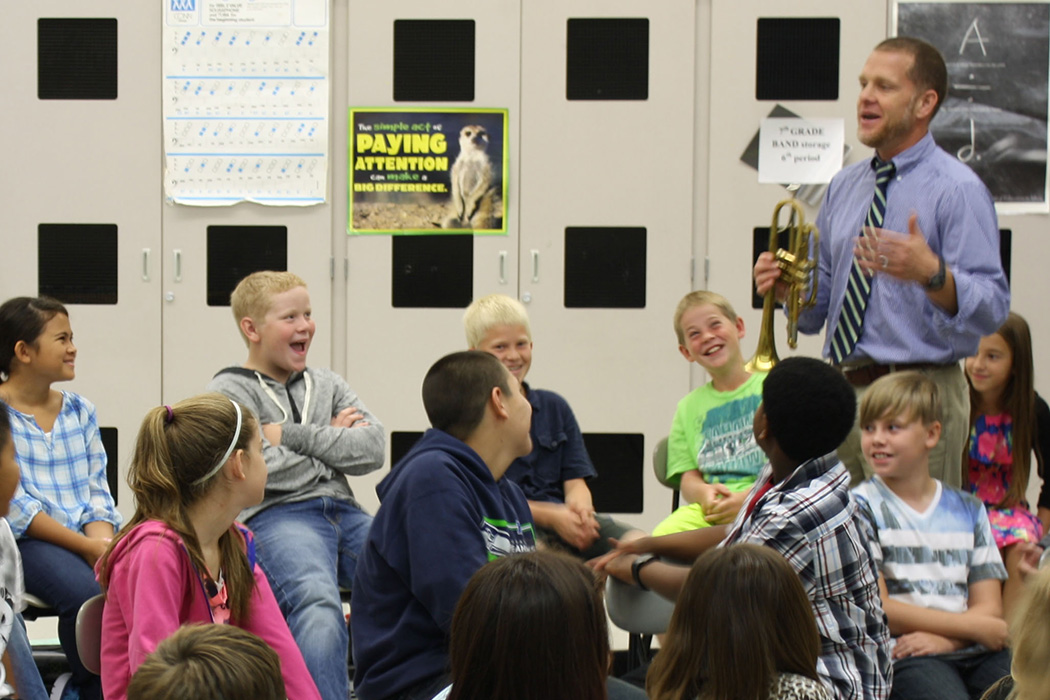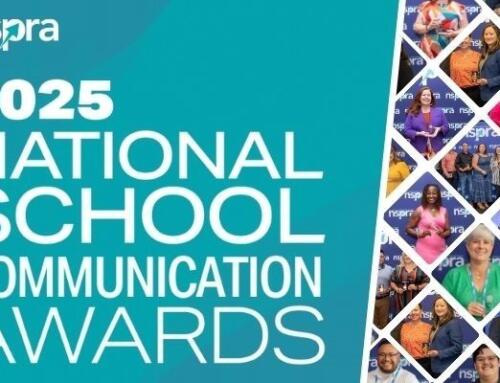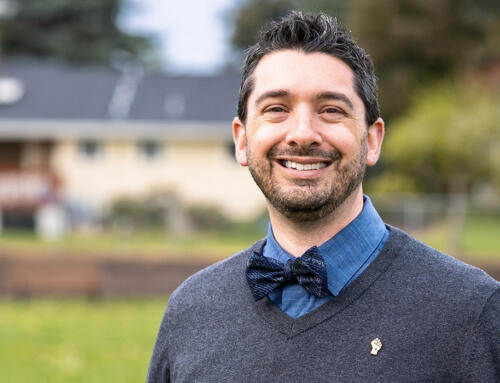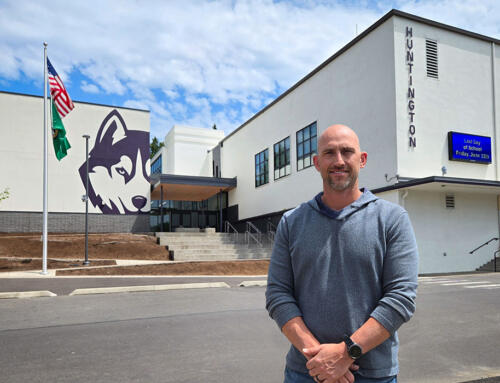Teachers use music to build language and math skills
When you think of students learning the basics—reading, writing and ‘rithmetic—you might not think of tubas, tenors and timpanis. But in Longview Public Schools, music classes play a growing role in developing students’ literacy and math skills.
The language of learning
Band and choir teacher Erik Edmundson likens the work his music students do at Cascade Middle School to learning a foreign language.
“Though it’s not necessarily a language of words,” he says, “they are looking at symbols, and their brain has to decipher those and put meaning to them.”
Edmundson asks students to read a piece of music and answer questions about it. When his students say a song makes them feel hopeful, Edmundson encourages them to dig deeper. He guides their discussion using language they encounter in standardized tests and Common Core State Standards.
“Cite the text,” he tells them. “What’s your evidence for that—not your feeling, not what you think—what’s your evidence from the text?”
Their answers could involve the speed of the notes or the dynamics, whether a phrase is growing louder or softer. Or they might explore the composer’s intent for the song.
At Mark Morris High School, Brian Mitchell’s choir students judge recordings of their own performances, writing critiques based on the music score. These exercises, Mitchell finds, help students take their performances beyond notes and rhythm.
“By exploring what the composer was trying to communicate, the students begin to communicate what’s behind the music at a deeper level,” Mitchell says. “Ultimately I try to get kids to pull this black and white, 2D thing off the page and make it breathe in color.”
The mathematics of rhythm
Younger students, such as those in Dan Reed’s music classes at Robert Gray Elementary, work on fractions.
“Kids are learning fractions in third and fourth grade,” Reed says, “so when they’re doing that, I’m doing time signatures in music, because they’re based on fractions. Quarter notes, eighth notes, sixteenth notes—they’re directly related to fractions.”
With even younger students, he works on counting rhythms, throwing in simple math problems: “If I take away two quarter notes from this rhythm, how many beats would I have left?”
Once in a while I’ll get a kid who blurts out, ‘Why are we doing math in music class?’” Reed says. “And I’ll answer, ‘Because music is full of math.’
A research-oriented music class
In the Cascade and Monticello middle school orchestra rooms, Lanette Shepherd leads students on explorations of music and also through research projects using the scientific method.
Last year she and her students explored a question that has long niggled at Shepherd: “How do we reach those kids who don’t believe they can learn?”
Crisscrossing school curricula, they designed a study that tested approximately 1,000 middle and high school students in their ability to recognize various rhythms. First, the students took a “pretest.” After the pretest, half of the students received resilience training—designed by Shepherd’s students—to help them learn strategies for bouncing back from stress.
Then, everyone was tested again—both the students who had the training and those who did not. Shepherd’s students helped interpret the test results, write reports and share their findings. They showed that resilience training especially benefitted seventh and eighth graders.
“It really worked,” Shepherd says. “It was a big motivator.”
Teaching a thinking style
At Cascade Middle School, Edmundson describes one student who receives special education services and struggled with notation and rhythm. As a sixth grader, she was unable to properly form notes or place the correct number of beats in a measure. But by eighth grade, her notes looked good, and every measure had the right number of beats.
“How could somebody progress in that and not progress in understanding the symbols of letters, the math in the sequence and value of the notes?” Edmundson reflects. “I am pretty convinced that literacy is a style of thinking and that a lot of subjects we teach increase our literacy.”





 ESD 112 equalizes educational opportunities for learning communities through innovative partnerships, responsive leadership, and exceptional programs.
ESD 112 equalizes educational opportunities for learning communities through innovative partnerships, responsive leadership, and exceptional programs.